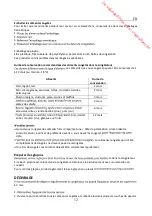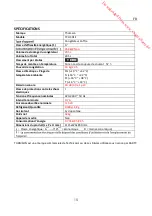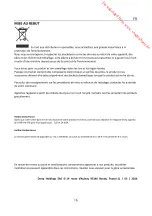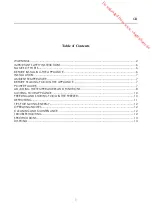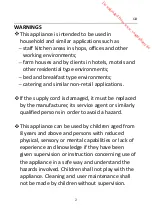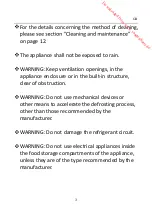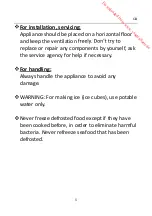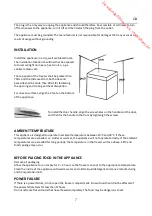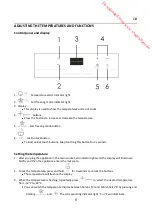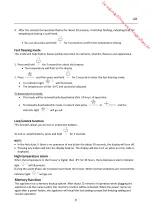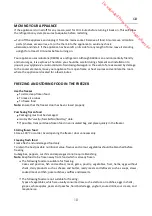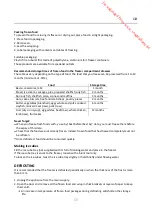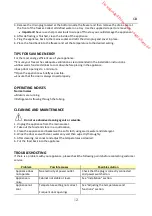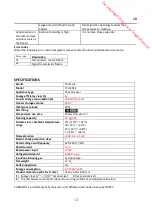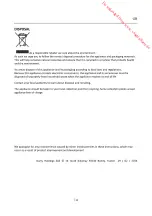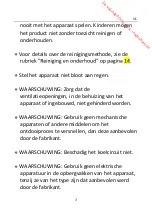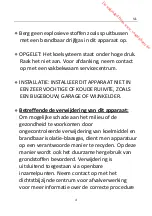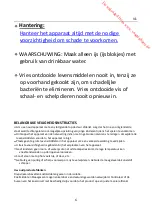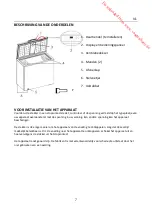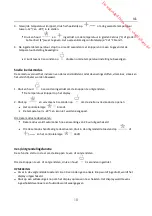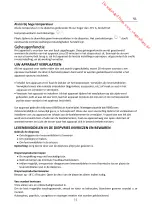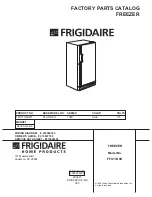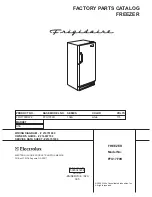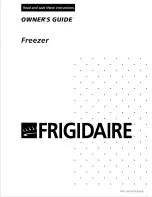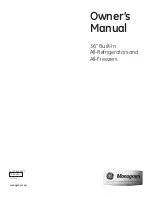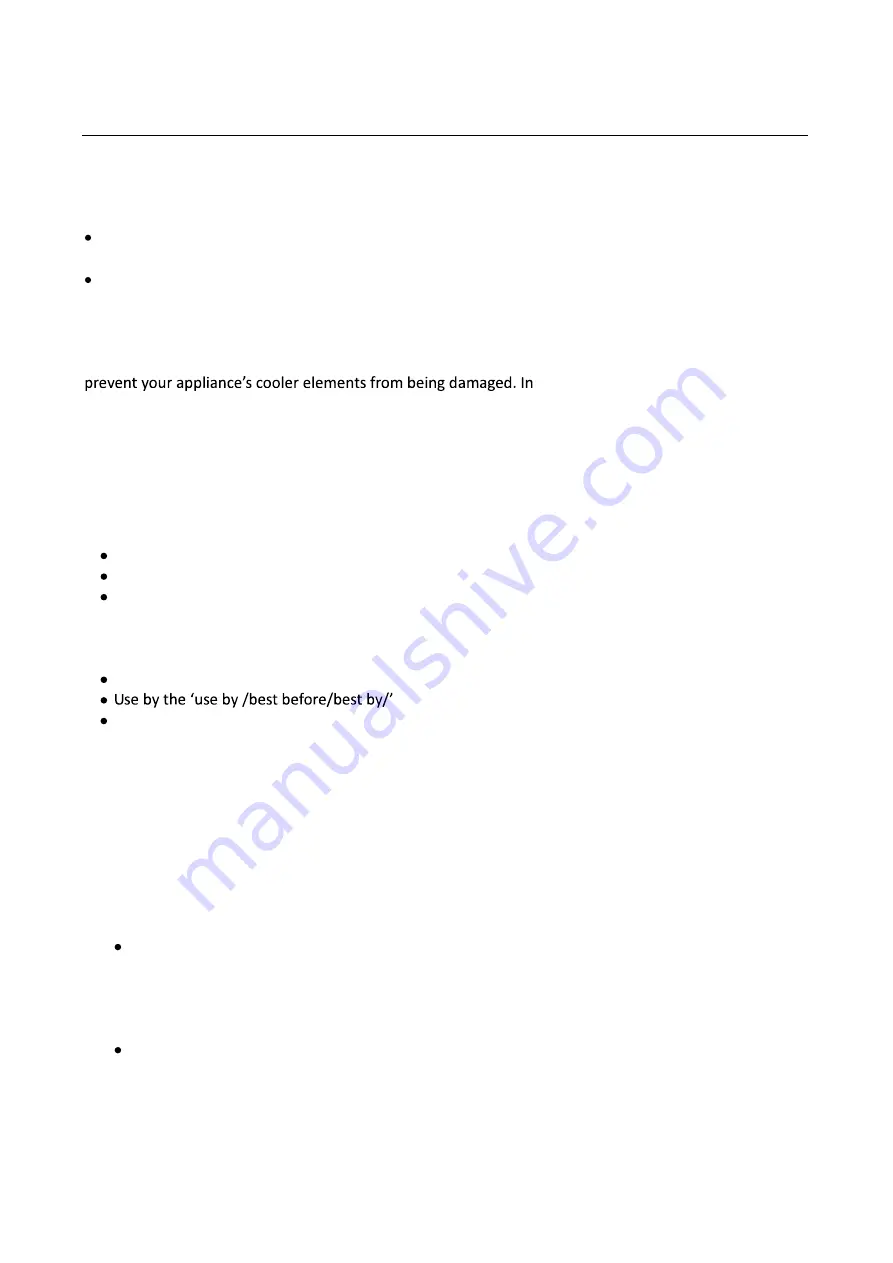
GB
10
MOVING YOUR APPLIANCE
If the appliance is turned off for any reason, wait for 10 minutes before turning it back on. This will allow
the refrigeration system pressures to equalise before restarting.
Turn off the appliance and unplug it from the mains socket. Remove all food. Also remove all mobile
parts (shelves, accessories, etc.) or fix them into the appliance to avoid any shock.
Relocate and install. If the appliance has been left on its side for any length of time, leave it standing
upright for at least 10 minutes before turning on.
Your appliance uses isobutane (R600a) as a refrigerant. Although R600a is an environmentally friendly
and natural gas, it is explosive. Therefore you should be careful during shipment and installation to
the event of a leak caused by damage
to the cooler elements, move your appliance from open flame or heat sources and ventilate the room
where the appliance is located for a few minutes.
FREEZING AND STORING FOOD IN THE FREEZER
Use the freezer
To store deep-frozen food.
To make ice cubes.
To freeze food.
Note:
Ensure that the freezer door has been closed properly.
Purchasing frozen food
Packaging must not be damaged.
date.
If possible, transport deep-frozen food in an insulated bag and place quickly in the freezer.
Storing frozen food
Store at -18
°
C or colder. Avoid opening the freezer door unnecessarily.
Freezing fresh food
Freeze fresh and undamaged food only.
To retain the best possible nutritional value, flavour and colour, vegetables should be blanched before
freezing.
Aubergines, peppers, zucchini and asparagus do not require blanching.
Note:
Keep food to be frozen away from food which is already frozen.
The following foods are suitable for freezing:
Cakes and pastries, fish and seafood, meat, game, poultry, vegetables, fruit, herbs, eggs without
shells, dairy products such as cheese and butter, ready meals and leftovers such as soups, stews,
cooked meat and fish, potato dishes, souffl
é
s and desserts.
The following foods are not suitable for freezing:
Types of vegetables, which are usually consumed raw, such as lettuce or radishes, eggs in shells,
grapes, whole apples, pears and peaches, hard-boiled eggs, yoghurt, soured milk, sour cream, and
mayonnaise.
Downloaded from www.vandenborre.be
Содержание TCH 301 E
Страница 11: ...D o w n l o a d e d f r o m w w w v a n d e n b o r r e b e...
Страница 17: ...D o w n l o a d e d f r o m w w w v a n d e n b o r r e b e...
Страница 26: ...D o w n l o a d e d f r o m w w w v a n d e n b o r r e b e...
Страница 31: ...D o w n l o a d e d f r o m w w w v a n d e n b o r r e b e...
Страница 32: ...2 6 7 7 8 8 8 8 9 11 11 13 13 13 14 14 15 16 D o w n l o a d e d f r o m w w w v a n d e n b o r r e b e...
Страница 42: ...D o w n l o a d e d f r o m w w w v a n d e n b o r r e b e...
Страница 44: ...D o w n l o a d e d f r o m w w w v a n d e n b o r r e b e...
Страница 47: ...D o w n l o a d e d f r o m w w w v a n d e n b o r r e b e...

